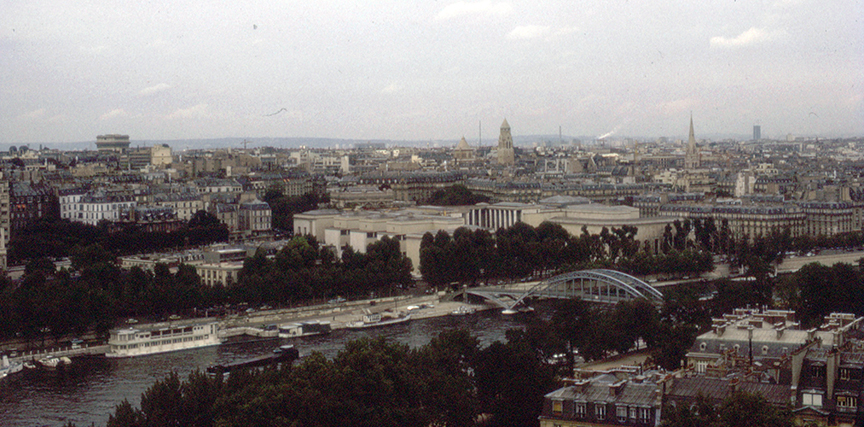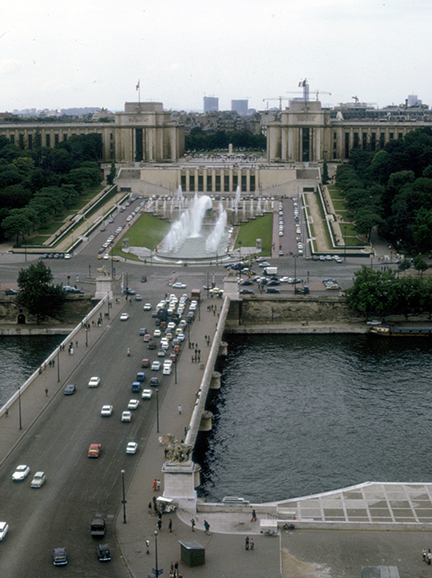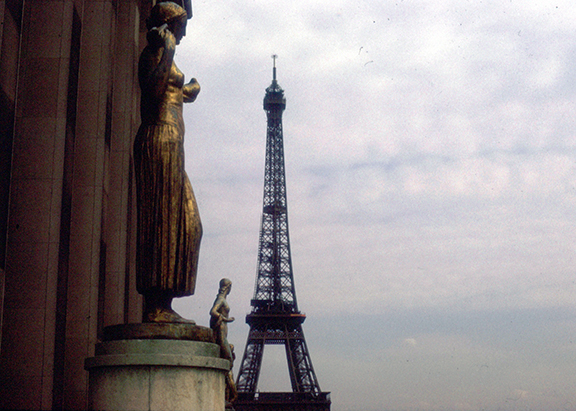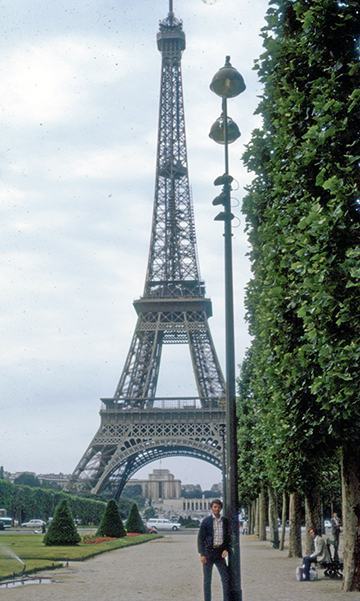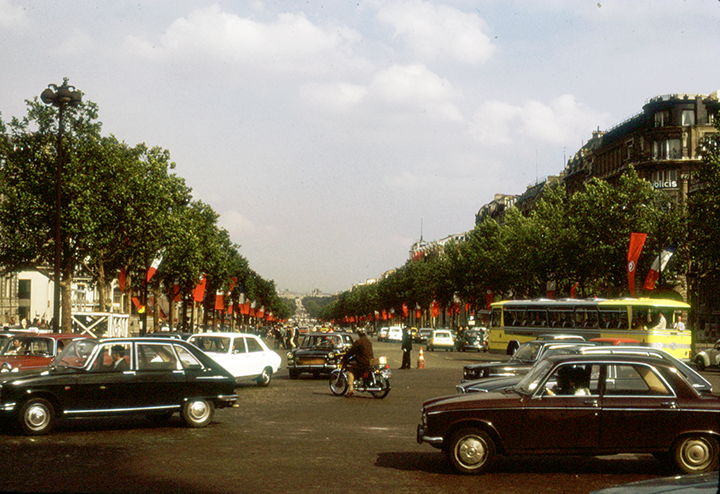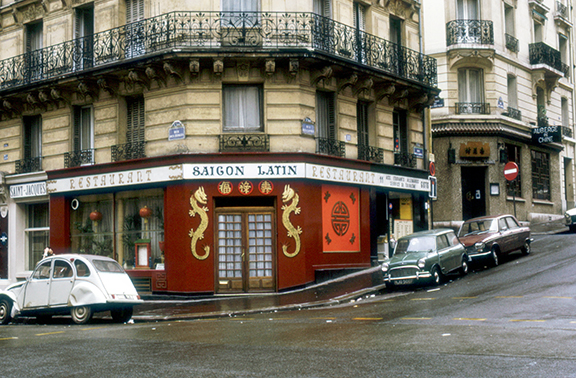We very likely made our way to Paris by this date in 1972. There was not that much to keep us in Nice. And Paris was our last stop before home!
Kevin recalls it was an overnight train, which seems logical. The distance is about 427 miles and would have taken almost eight hours, which would have allowed us to use the train as our “hotel,” as we did on occasions before. Only our Copenhagen-to-Munich trip had been longer.
We hit the major attractions in Paris — Eiffel Tower, the Louvre, Musée d’Orsay, Tuileries Garden, Versailles, Les Invalides, Notre Dame, Arc de Triomphe. There will be photos from or of most of them in this post, but I have not located slides from the Louvre, Musée d’Orsay, or Versailles. I remember some of them clearly and will post them when I find them among my disarrayed belongings.
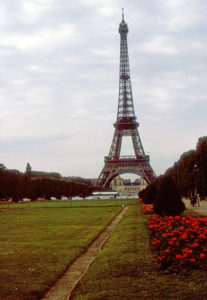 The symbol of Paris is the Eiffel Tower, the 1,083-foot-high wrought-iron lattice tower that opened in 1889 for the World’s Fair that year. It opened only two years and two months after construction started. It was originally intended to be only a temporary exhibit, and was retained essentially because of its value as a radiotelegraph tower. Now, it welcomes more visitors each year than any other monument that charges a fee in the world.
The symbol of Paris is the Eiffel Tower, the 1,083-foot-high wrought-iron lattice tower that opened in 1889 for the World’s Fair that year. It opened only two years and two months after construction started. It was originally intended to be only a temporary exhibit, and was retained essentially because of its value as a radiotelegraph tower. Now, it welcomes more visitors each year than any other monument that charges a fee in the world.
You could get to the first and second levels of the tower by elevator and stairs. Not sure from which level I took this photo of Paris.
The tower is also bracketed by fountains and gardens. To the northwest, on the other side of the River Seine, are the Trocadero Gardens and fountains, backed by the Palais de Chaillot.
Here’s a photo from the reverse angle and ground-level.
The dome at rear left in the above photo is the Dome des Invalides, the tallest church building in Paris. The dome is a prominent feature of Les Invalides, a complex of buildings, including museums and monuments, all related to the military history of France.
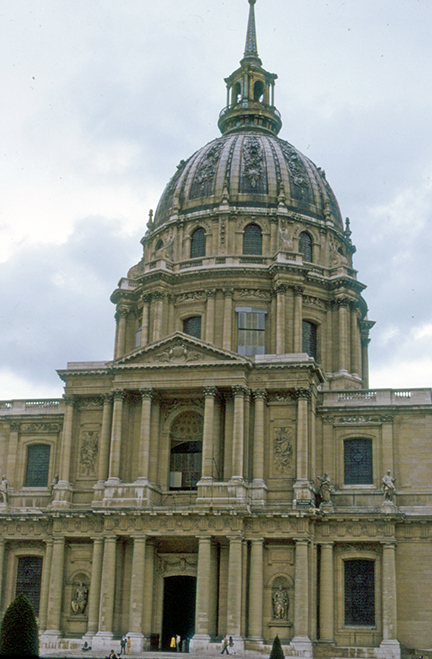
Among the many notable French military figures who are entombed in the complex is the one — Napoleon Bonaparte.
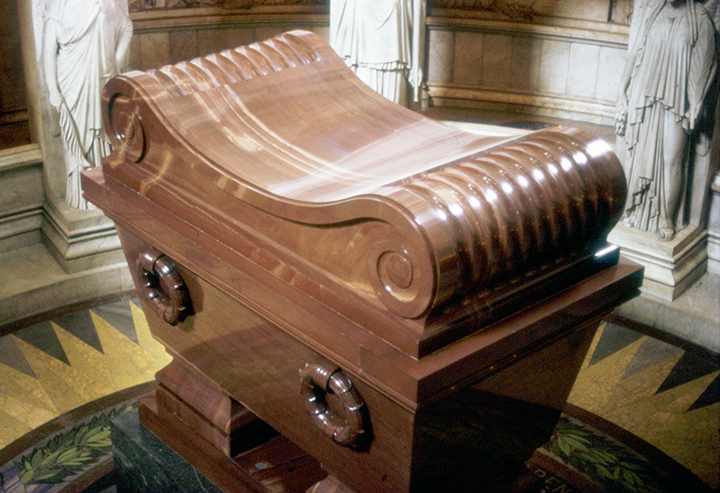
The main hall of the church, Saint-Louis-des-Invalides Cathedral, is lined with battle flags, representing institutions and countries with which France has fought.
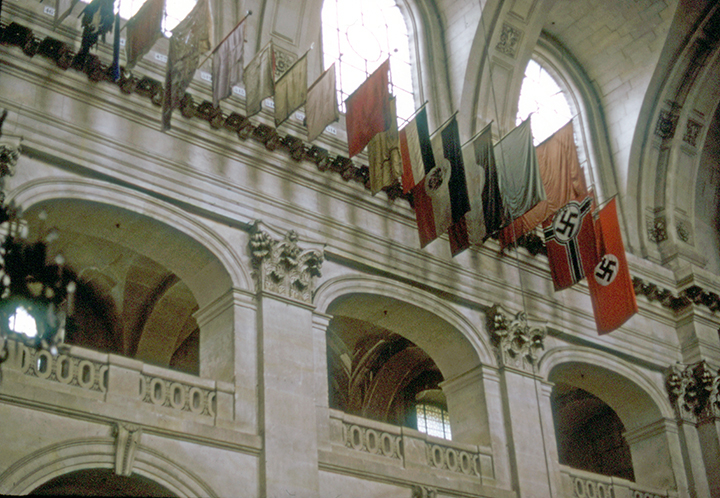
The Arc de Triomphe, of course, is also military-related. Its construction was completed in 1836 and it is to honor those who fought and died for France in the French Revolutionary and Napoleonic wars. Names of battles and generals are inscribed on inner and outer walls. It sits at the western end of the Champs-Élysée.
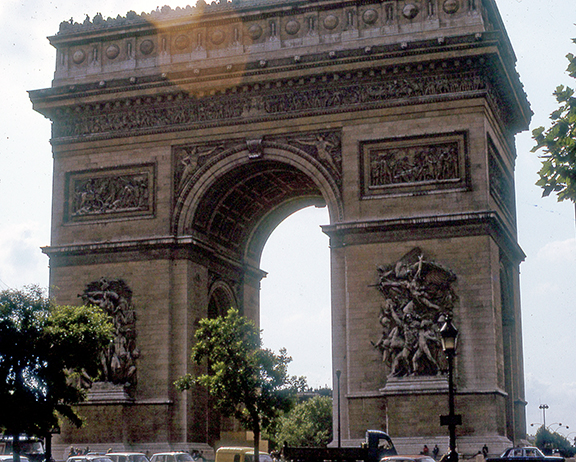
At the base of the monument is the tomb of France’s unknown soldier from World War I.
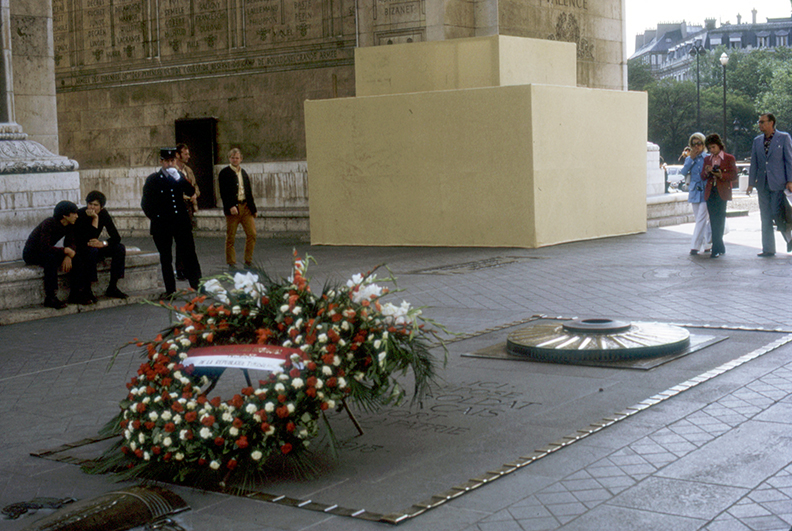
Formally the Cathédrale Notre-Dame de Paris, Notre-Dame is a medieval Catholic church on the Île de la Cité, an island in the River Seine. Construction started in 1163 and was completed in 1345. It’s considered one of the finest examples of French gothic architecture. And it has no connection at all to the midwestern institution that bears a similar name.
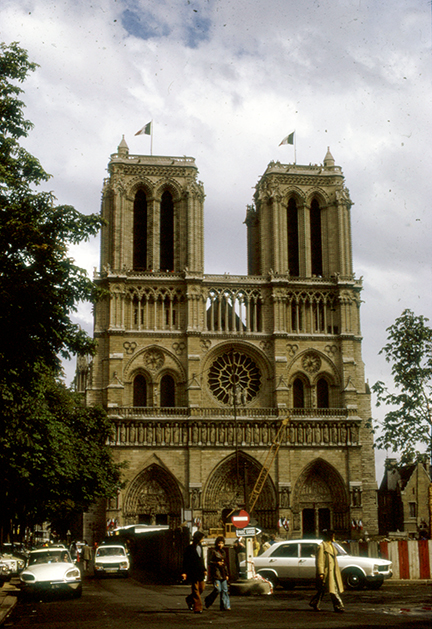
The cathedral has been closed since April 2019, when a fire destroyed the roof and spire. The basic structure remained intact, however, and the church is being restored.
Kevin points out that we also visited Le Drugstore, a popular boutique and restaurant located near the Arc de Triomphe on the Champs-Élysée. Researching for this post, I discovered that only three months after we did so, a fire gutted the building in which it was located. A newer restaurant with the same name is there now.
We also had a culinary experience in Paris that seemed entirely apropos, Kevin reminded me. Each of us for the first time consumed escargot. We split an order of a dozen, he said, daring each other to eat them. I don’t remember my reaction, but I have eaten escargot whenever I’ve had the opportunity since. Love it. Cool that first time was in Paris.
Here are a couple of more photos of the Eiffel Tower, one with a young Americain in it.
I’m guessing the photo below is of the Champs-Élysée because I don’t why I would have taken the photo otherwise. (Kevin confirms it is the Champs-Élysée.)
And, finally, a photo of a restaurant near our hotel, I would guess, with an interesting combination of cuisines.
Love the classic Citroën 2CV at left.
I remember that our flight back to Boston was on Air France. I think I recall good food.
This experience was definitely a bucket list kind of thing. Kevin and Debra have made many trips back to Europe. My only subsequent trip to Europe was 47 years after this one, when I and my younger daughter, Julia, visited Berlin and Lithuania. And that’s another story, which, if interested, starts here.


